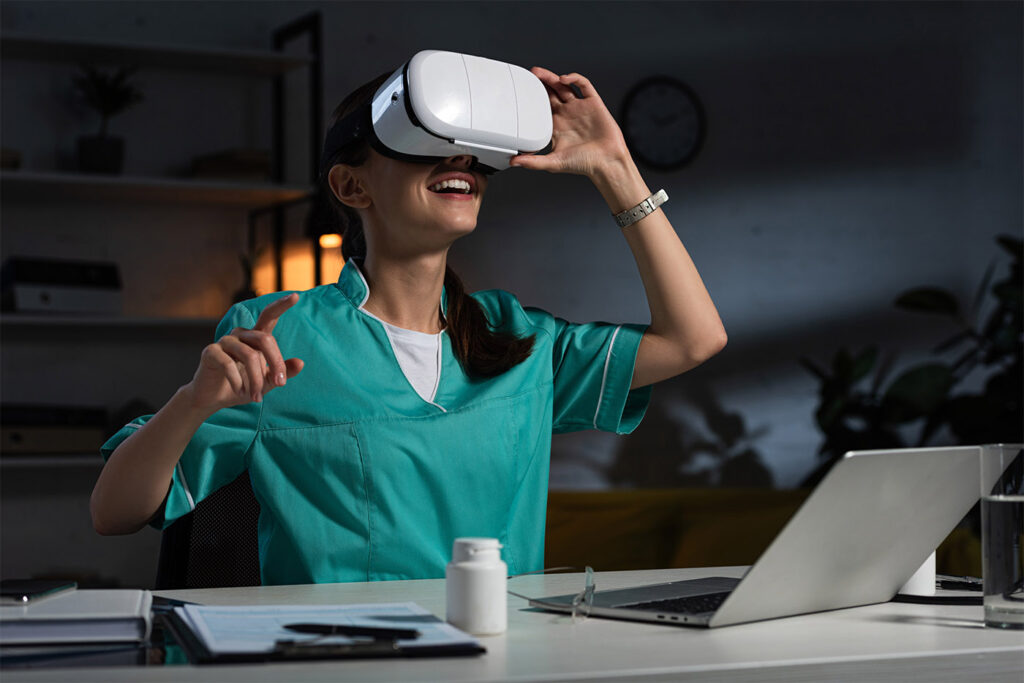Technological advances have been essential to provide support to relieve pressure on nurses that are working in health care settings that have an ongoing shortage of nurses. Healthcare technology helps nurses to manage repetitive tasks and time-consuming, administrative responsibilities. Trust me, I’m a nurse, we have hundreds of these
Healthcare Technology and Patient-safety
Technology supports nurses in a wide variety of health care settings to enable efficient and easy access to tools such as online appointment scheduling, electronic records, and medication prescriptions.
“Ensuring nurses can access a well designed patient record system helps to facilitate patient safety by enabling nurses to instantly have access to up to date and accurate patient information. This improves patient safety by ensuring test results and all known diagnoses are easily accessible and treatments proposed are the most appropriate for the patient. There are amazing companies out there working to leverage this technology to help improve services and positively impact patient care. Shout out to @Cognium”
Communication Across Different Health Services
Nurses need access to integrated records to communicate effectively with the care being provided to a patient via different health services. Innovations with electronic systems support patient care and safety by ensuring care is effectively co-ordinated and interactions between different health services are streamlined. Instant messaging is another way technology supports team collaboration across multi-disciplinary teams, reducing the time required to diagnose and identify the most appropriate course of treatment for the patient.
Delivery of Evidence-Based Practice
Technological innovation, such as data-enabled, clinical decision-making, and evidence-based practice, has standardized care and enabled nurses to provide support to patients more efficiently and reduced administrative delays. Multifaceted relationships between the patient, nurse and other health care teams, is an evolving process that relies on nurses embracing advancements with technology to speed up the delivery of the most appropriate patient-centred care to improve healthcare outcomes.
The Future of work via Technology and Innovation for Nurses across the spectrum of the industry from new graduates to Telehealth with Nurse Practioners
Nurses are at the forefront of patient communication which means that they are able to identify and put into action technological innovations for practical applications.
Technological advancements will undoubtedly bring about further changes that will improve the way health care is delivered. One technology that is rapidly becoming an integral part of innovation in nursing for the future is the use of virtual reality. Virtual reality is providing training tools that enable nurses to learn skills that were once only performed by doctors and future deployment of all specialties within the nursing profession are now able to access remote learning via VR.
An article from 2018 by Australian Broadcasting Corporation (ABC) news discussed the nursing faculty of Western Sydney University (WSU), Australia. They were trialing learning via the platform of virtual reality to great effect, attracting enrolments for nursing from a broader pool of individuals by providing access to an online Bachelor of Nursing degree. Students used an app, downloaded onto their mobile phone with virtual reality goggles, the goal is to reduce the shortage of nurses by attracting students that can not attend a physical location to complete their training. The use of VR enables lecturers to teach skills that would otherwise be impossible to learn without being in a physical location and having access to real equipment and patients. Dr Cathy Dickson, the program director of Nursing and Health Science and WSU Online is keen to promote the use of VR within the nursing profession for advanced training and quicker progression for nurses to become more specialized. These concepts are now magnified during COVID. Direct issues for learning including learning without being in a physical location, Learning in teams and access to patients and these can all be mitigated through the implementation of state of the art VR hardware and software solutions.
Virtual Reality benefits not only the user to improve their competence when treating patients, setting up equipment, and learning new skills; it is anticipated that it will increase the number of student nurses that complete their degrees and are able to enter health care settings with a higher level of confidence in their abilities.
